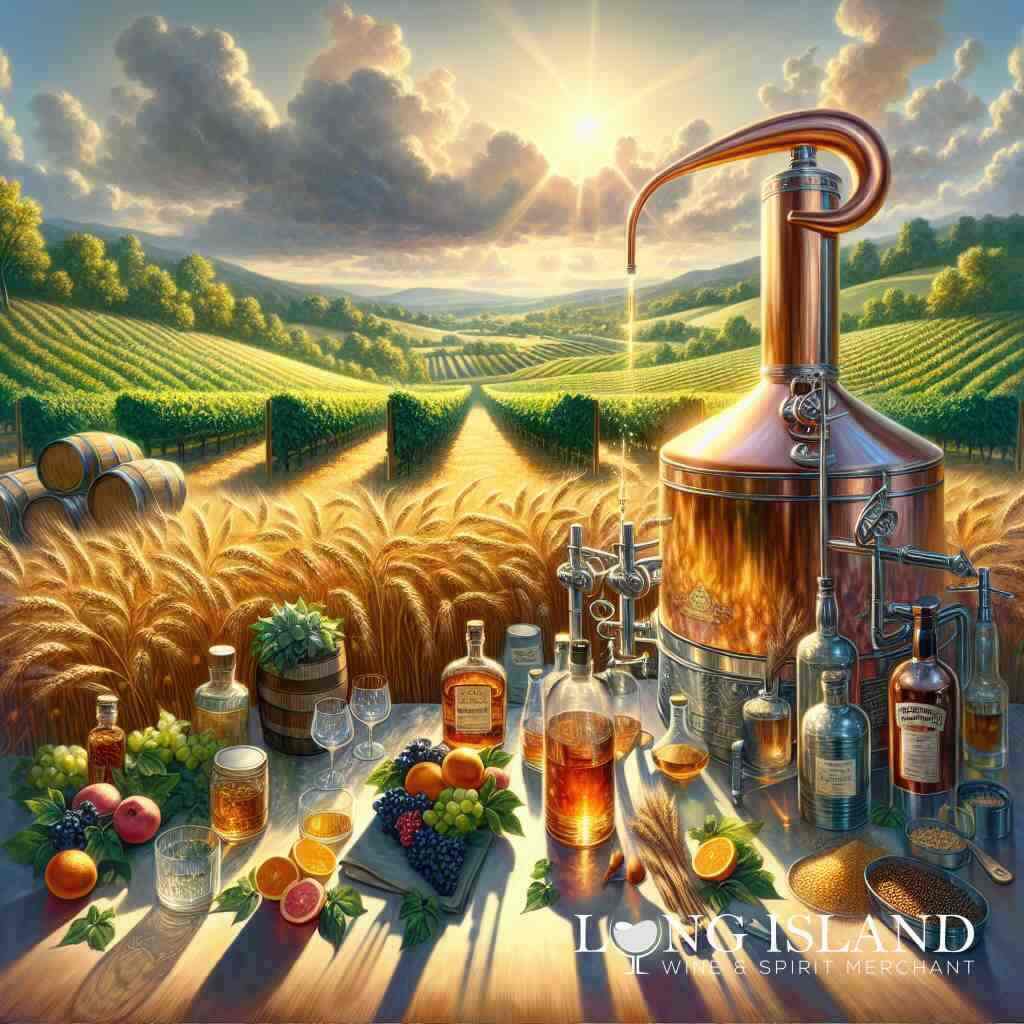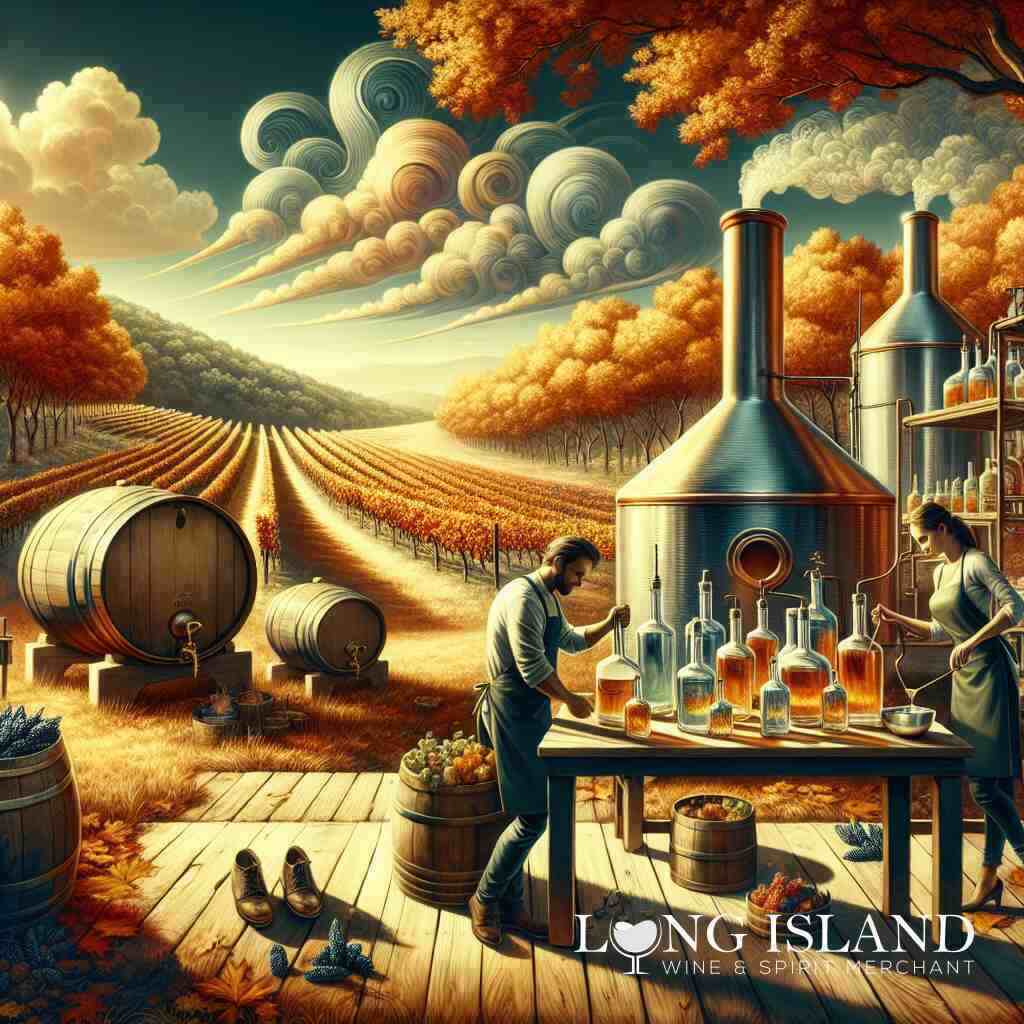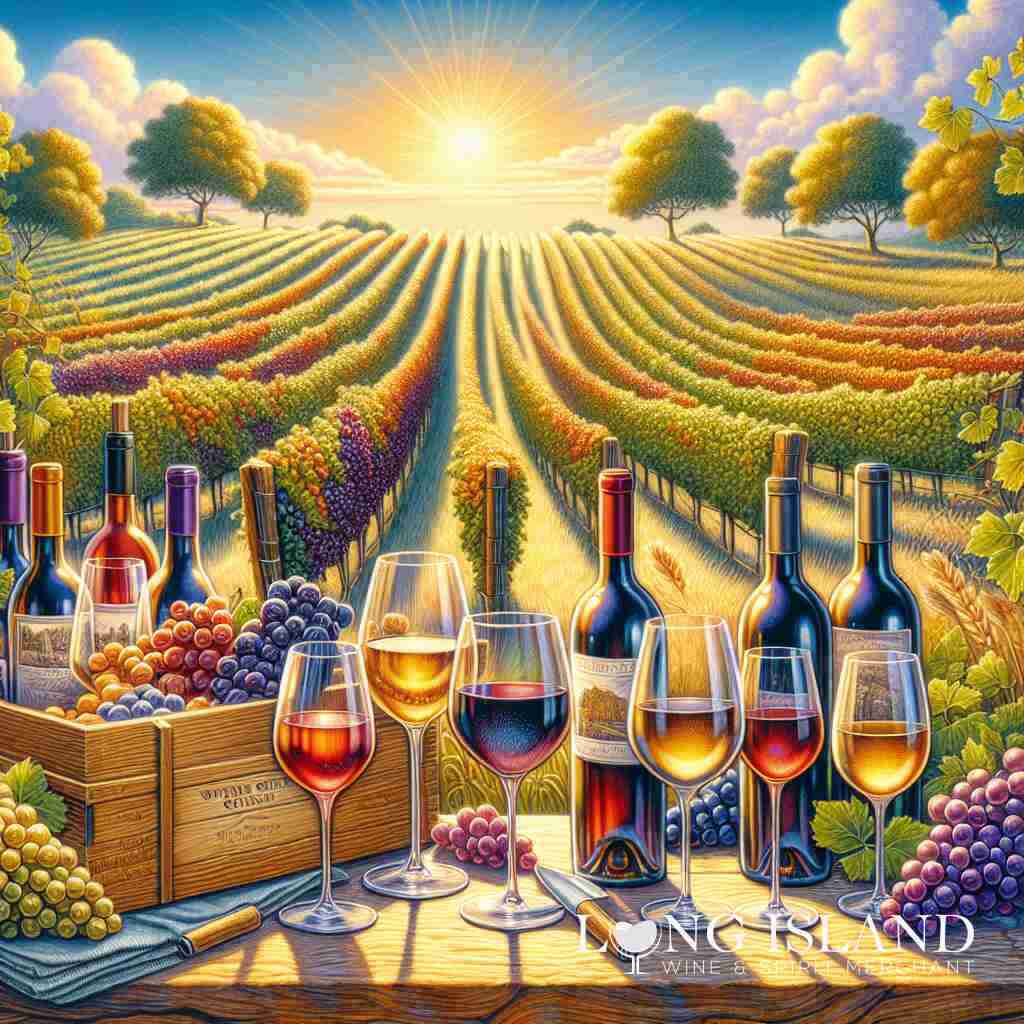
Exploring the Difference Between Red and White Wines Near You
April 2, 2025
Uncorking the Secrets: A Journey into the World of Wine
Introduction to the Delicate Art of Wine Appreciation
Embarking on a journey into the world of wine opens the door to a panorama of flavors, aromas, and textures. For seasoned connoisseurs and newcomers alike, understanding the subtleties between red and white wines is essential. Each bottle embodies a story, a snapshot of regional terroir and winemaking artistry. The experience of wine appreciation engages the senses, inviting enthusiasts to explore varietal diversity and discover personal preferences. At the heart of this journey lies the perfect wine glass, a conduit for unlocking the delightful complexities of every sip.
Setting the Stage: Red vs. White Wines
In the vast universe of wine, the primary division lies between red and white varietals. They embody distinct characteristics, influenced heavily by grape selection, winemaking techniques, and aging processes. Red wines, known for their bold bodies and tannin structures, offer a depth of flavors ranging from fruit-forward to richly oaked. Conversely, white wines present a spectrum of acidity and aroma, appealing to those who favor crisp, refreshing profiles. Discovering red and white wine differences enriches the tasting experience, illuminating the sophisticated dance of aromas and flavors that define each style.
Introducing the Artisans of Long Island Wine
Nestled in the picturesque landscapes of Long Island, the art of winemaking thrives through dedication and innovation. Long Island Wine & Spirit Merchant stands at the forefront, offering an exemplary selection of wines known for both quality and diversity. This local cottage industry is revered for cultivating unique wine profiles, boasting a variety of artisanal labels that reflect the nuanced climate and distinctive terroir of the region. Discover Long Island’s wine brands, offering an array of options that cater to novice tasters and knowledgeable oenophiles alike, each bottle promising to transport you to the heart of wine country with every pour.
The Colorful Dance of Red and White: An Exploration
The Palette of Reds: Understanding Wine Color Differences
The vibrant hue of red wine captivates the eye, offering insights into its depth and character. Red wine color differences arise from grape varietals, skin contact duration, and even the region in which the grapes are grown. These factors influence not only the visual appeal but also the complexity on the palate. Red wines might exhibit shades ranging from lighter ruby to deep garnet, each telling a unique story. As you indulge in the science behind red wines, you’ll uncover the intricate dance between pigment and flavor that defines this beloved category.
The journey through red wine starts with understanding how different grapes contribute to its spectrum of colors and flavors. For example, Pinot Noir tends to produce a lighter wine, whereas a Cabernet Sauvignon leans towards a darker, more robust appearance. This connection between hue and taste makes exploring the world of red wine a rich and rewarding endeavor. A deeper dive into each bottle reveals a tapestry of regional wine variations that add layers to your tasting experience.
Whites in the Spotlight: A Closer Look at White Wine Characteristics
White wine, known for its clear and sometimes straw-like hue, offers a completely different tasting experience. The absence of grape skin contact during fermentation plays a pivotal role in shaping its characteristics. Without the additional tannins and pigments, white wine exhibits a lighter body and a brighter acidity. White wine characteristics such as crisp freshness and lively zest are trademarks of varietals like Chardonnay and Sauvignon Blanc.
In contrast to the deep reds, white wines paint their portrait within the taste spectrum, often characterized by notes of citrus, green apple, or tropical fruit. The fermentation process in winemaking for these varietals is carefully managed to retain their delicate aromas and flavors. Unveiling the intricate layers within a glass of white wine can elevate your appreciation and understanding of this graceful libation.
Exploring Aromatic Elegance: White versus Red Wine Aroma
Aroma plays a vital role in the sensory experience of both red and white wines, yet it manifests differently in each. Reds often lead with rich bouquets of dark fruits, spices, and earthy notes, inviting a journey through their complex aromatic profile. White wines, on the other hand, tend to exude lighter scents such as floral, citrus, or stone fruit, offering a refreshing olfactory experience.
Comparing wine aromas-reds versus whites-shows that the diversity in scents can be attributed to varietal characteristics and regional influences, creating an elaborate mosaic of olfactory sensations. From subtle nuances to pronounced notes, the aroma of wine enriches your tasting exploration, allowing enthusiasts to experience the full symphony of flavors from start to finish.
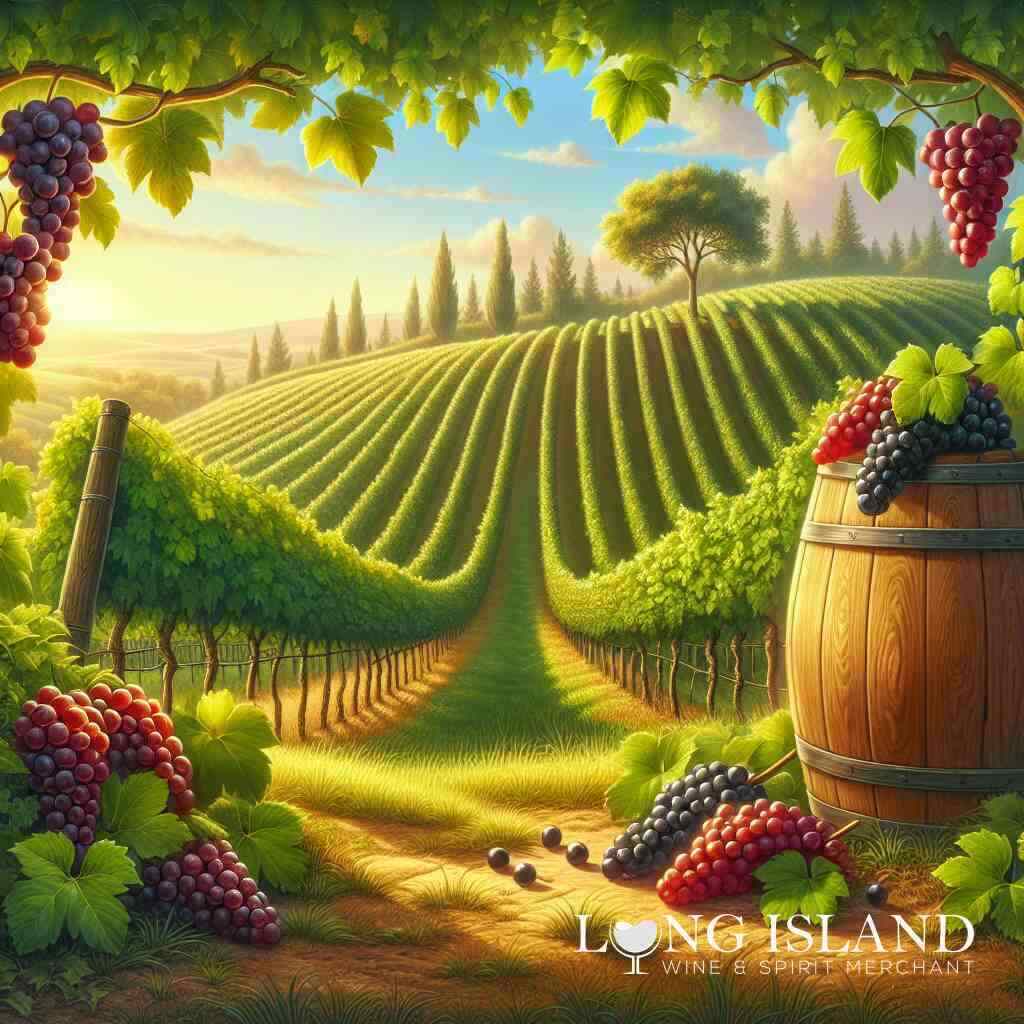
Savoring the Symphony: Flavor Profiles of Red and White Wines
Tasting the Terroir: Red Wine Flavors Unveiled
Delving into red wine flavors opens a world of complexity and depth characterized by each region’s terroir. Grapes, the soil they are grown in, climate, and winemaking techniques contribute to the wide array of flavors available. For instance, a bottle of Pinot Noir from a cool climate might offer delicate notes of cherry or raspberry, while a robust Cabernet Sauvignon from a warmer region provides dense flavors of blackcurrant and plum. Understanding these red wine flavors requires a nuanced palate and an appreciation for how local conditions shape the final product.
In each glass, an array of aromas accompanies the flavors, ranging from earthy undertones to spicy accents. As you explore regional wine variations at Long Island, note how these elements interplay to create a unique sensory experience. Appreciating the terroir means recognizing these characteristics and savoring their contribution to the overall tasting journey, enhancing your overall wine-tasting experience.
Aroma and Acidity: Hallmarks of White Wine
White wines captivate with their refreshing acidity and varied aromas, hallmarks that define their character. Unlike red wines, white varietals such as Chardonnay or Riesling highlight crisp notes of citrus, green apple, or tropical fruits, offering a clean and vibrant drinking experience. This acidity is a critical factor, balancing the wine and giving it a lively mouthfeel, which is essential for many light-bodied wines.
The aromatic profile of white wine is both delicate and expressive. When paired with food, these fragrances become an enticing component of the perfect wine-pairing process. Exploring wine-tasting tips with local experts can reveal much about how white wine aromas can transform a meal, elevating both the dish and the wine. By understanding aroma and acidity, wine enthusiasts can refine their preferences and deepen their appreciation for white wine’s elegance.
From Fruit to Oak: The Complexities of Wine Tasting
The journey from fruit to oak in wine tasting showcases the intricacies of viniculture and the artistry involved in creating both red and white wines. Each step, from selecting the grape varietal to employing oak aging techniques, imbues the wine with nuances that enrich its profile. The fermentation process in winemaking plays a crucial role here, transforming simple grape juice into a multitude of vibrant flavors.
Oak aging further adds complexity, imparting notes such as vanilla, toast, or even smoky hints to the wine. This maturation process allows wines, particularly reds, to achieve boldness and depth. Even white wines benefit from a well-managed exposure to oak, finding a balance between oak-driven flavors and their natural acidity. Mastering the art of wine tasting involves recognizing these transformations, adjusting one’s palate to discern them, and savoring the multitude of tasting notes present within each bottle. With this understanding, each wine tasting becomes not just an experience but a symphony of flavors to enjoy.
Balancing Act: Pairing Red and White Wines to Perfection
The Art of the Perfect Wine Pairing
The knowledge of pairing red and white wines can transform a meal into an extraordinary dining occasion. Each pairing is an exploration that invites both contrast and harmony, enhancing the flavors on the plate while complementing the wine’s inherent notes. Mastering this art requires an understanding of flavor balance, acidity, and the intrinsic characteristics found in both red and white wines. Considerations such as the dish’s intensity, texture, and spice level all play crucial roles in determining the ideal pairing, offering countless ways to refine your tasting experience.
For many enthusiasts, understanding wine pairing strategies involves familiarity with classic pairings, like Cabernet Sauvignon with steak or Chardonnay with creamy pasta dishes. As you explore, remember that personal preference is a valuable guide in discovering new combinations that delight you. By honing your skills, you not only elevate your dining experience but also expand your appreciation for variances in wine profiles. Engage with experts who can provide insights, enabling you to craft perfect pairings with Long Island’s finest wines. Your journey toward becoming a connoisseur of this culinary harmony is filled with delicious discoveries.
Red Wines for Special Occasions: Bold and Brave
Red wines are often the centerpiece of special occasions, offering a robust presence that complements celebratory moments. Their bold bodies and complex flavor profiles make them well-suited for formal gatherings and elegant dinners. Signature varieties such as Merlot, Syrah, and Malbec bring a depth of richness to the table, perfect for pairing with hearty dishes like beef, lamb, and game meats. The tannins and full-bodied nature of these wines provide a balanced counterpoint to rich, savory flavors, enhancing the entire dining experience.
Special occasions demand wines that can hold their own amidst memorable dishes and company. For unique experiences, check out Mastering the Art of Wine Pairing: Long Island Insights. When selecting a bottle for such events, consider the unique notes and regional expressions that set each varietal apart. For instance, a rich Cabernet Sauvignon might pair splendidly with a gourmet steak dinner, while a sophisticated Pinot Noir could provide an elegant companion to roasted duck. By choosing wines with bold character, you ensure that your celebration is underscored by the remarkable quality and nuance red wines have to offer.
Sweet, Dry, and Everything in Between: The Diversity of White Wines
White wines embrace a vast spectrum, ranging from sweet to dry, showcasing the diversity and adaptability they bring to various culinary contexts. Each white wine varietal, from the honeyed notes of Riesling to the crisp acidity of Sauvignon Blanc, offers a distinct tasting experience characterized by its unique balance of sweetness, acidity, and aroma. These wines thrive in versatile roles, pairing beautifully with dishes that emphasize lighter fare, such as salads, seafood, and poultry, where their refreshing qualities shine.
For those exploring white wines, understanding their intrinsic differences allows for more informed choices that enhance both the wine and the meal at hand. Sweetness levels, in particular, can significantly influence pairing partnerships, tailoring the tasting experience to align with personal preferences. Try experimenting with the contrast between a dry white, such as a Pinot Grigio paired with a rich, creamy cheese, or indulge in the symphony of pairing a sweet Moscato with spicy cuisine. The key lies in appreciating each wine’s specific character, enhancing your dining adventures with the diversity white wines passionately provide. Visit Long Island’s spirits store to explore these further aspects of white wine characteristics and find the perfect match for your culinary creations.
The Science Behind the Sip: Fermentation and Aging
The Alchemy of Fermentation in Wine
The journey from grape to glass is a dance steeped in science, particularly during the fermentation process. At its core, fermentation is where sugar in the grape juice is converted into alcohol through the action of yeast. This transformation plays a pivotal role in shaping the wine’s character. The meticulous balance of temperature control and yeast selection orchestrates a symphony of flavors, bringing forward each varietal’s unique profile. Red wines, often fermented at higher temperatures, tend to develop richer bodies, while white wines maintain their bright, crisp characteristics with cooler fermentation.
Fermentation in wine is a gateway to infinite possibilities, influencing not just alcohol content but also aroma, taste, and color. It’s the catalyst for unlocking both the structural complexity and depth found within each bottle. As you delve into unique wine experiences in New York, consider the sophistication behind every fermentation technique that contributes to elevating the wine’s essence.
Oak Aging: Crafting Complexity in Every Sip
The role of oak in wine maturation cannot be understated. For details, visit Understanding Wine Aging with Long Island Experts. Oak barrels infuse wine with subtlety and depth, adding layers of complexity. This process introduces nuanced flavors such as vanilla, spice, and toast into the wine, enhancing the sensory experience with each sip. The choice between American and French oak further diversifies the endnotes and body of the wine, with American oak generally imparting more robust flavors, while French oak bestows subtler elegance.
The interplay between fruit, tannins, and the specific toasting level of the oak barrel creates an intricate dance that wine aficionados cherish. Oak aging allows both red and white wines to evolve, capturing winemaking artistry at its finest. Discovering how oak aging influences your palate is a journey unto itself, illuminating the dedicated craftsmanship behind every bottle you savor.
Alcohol Content and Body: The Red and White Winery Divide
Understanding the nuances in alcohol content and body is essential for any wine enthusiast comparing red and white wines. Typically, red wines exhibit a higher alcohol content and a more robust body. This results from the skin fermentation technique, which not only contributes to the deep colors and tannin structure but also enhances the warmth and boldness perceived upon tasting.
Conversely, white wines generally have a lower alcohol content, translating to a lighter, often refreshing profile. These characteristics are amplified by their innate acidity and aroma, prominent in varietals like Sauvignon Blanc and Moscato. Recognizing these differences can refine your wine selections, as body and alcohol content directly influence wine pairing and overall enjoyment. Embrace the diverse expressions that each winery divides, enhancing your understanding and appreciation of the rich world of wine.
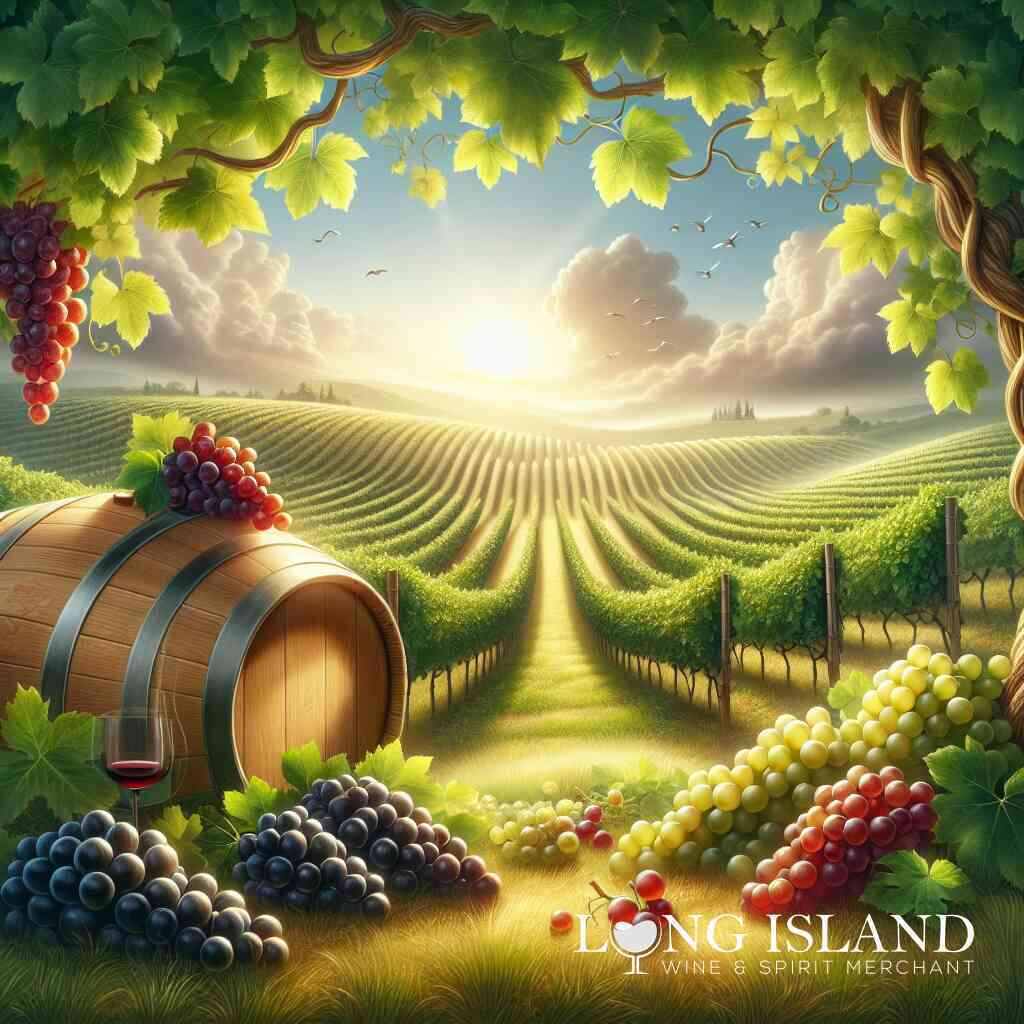
Concluding Thoughts: Embracing a New Wine Experience
The Journey of a Wine Enthusiast
Embarking on a journey as a wine enthusiast is akin to entering a world filled with boundless possibilities. Each bottle, whether a robust red or a zesty white, has its narrative waiting to be discovered. As you refine your palate through the myriad of flavors and aromas, you become attuned to the subtleties that distinguish one wine from another. The experience of exploring Long Island’s best wine selection enhances your understanding, nurturing your journey as a connoisseur.
Cultivating this passion requires exploring diverse wine varietals and appreciating the rich traditions that define winemaking. Dedication to this art form promises to unlock a deeper recognition of quality and craftsmanship. By engaging with both familiar varieties and hidden gems, you invest in a lifelong pursuit that continually rewards curiosity and appreciation for fine wine and good spirits.
Discovering Long Island’s Wine Gems
Long Island is a treasure trove of hidden wine gems, each offering a unique taste of the region’s vibrant wine culture. These discoveries await those willing to venture beyond the mainstream, revealing boutique wineries and artisanal labels steeped in tradition and innovation. As you explore hidden wine gems in Long Island, you’ll uncover vintages that encapsulate the area’s essence, delighting your senses with flavors as rich as the history behind them.
The quest to find these local marvels enriches your wine repertoire while supporting the small-scale producers who tirelessly work to elevate their craft, a journey explored in Uncovering Long Island’s Hidden Rosé Wine Gems. Embrace the opportunity to uncover the diverse expressions offered by these wines, many of which exhibit flavors as bold and distinct as the landscapes they originate from. This journey promises to be a rewarding exploration of not just wine but of place, passion, and product.
Your Next Wine Adventure Awaits
As you contemplate your next wine-filled adventure, consider the endless exploration opportunities offered by tasting experiences and events. Let your curiosity guide you to regions and varieties unknown, vibrant with potential tastings that could redefine your palate. Planning your next foray is an invitation to delve into the heart of winemaking, from vineyard tours to intimate tastings, where every bottle tells a tale of its own.
By engaging with unveiling wine-tasting experiences, you open the door to a dynamic world of discovery. Whether indulging in a local tasting room or ordering a custom case online, each sip promises new insights and flavors. Your path as an enthusiast is limited only by your willingness to explore and savor the depths of the wine universe, where every glass enriches your journey, and every bottle is a chapter in your wine story.
Frequently Asked Questions
Question: What makes Long Island Wine & Spirit Merchant a great place to explore the difference between red and white wines near you?
Answer: Long Island Wine & Spirit Merchant is an ideal destination for exploring the difference between red and white wines due to our extensive selection and knowledgeable team. We carry a diverse range of wine varietals, allowing you to easily compare red and white wines, from bold red wine flavors with rich tannins to white wine characteristics like refreshing acidity and aromatic profiles. Our convenient location and alcohol delivery services near you make it accessible to explore varieties from Long Island and beyond. Our expertise ensures a personalized wine-tasting experience, guiding you through the subtleties and nuances that set these two categories apart.
Question: How can I use your wine selection better to understand red wine bodies and white wine acidity?
Answer: Our wine selection at Long Island Wine & Spirit Merchant provides an excellent platform to understand the complexities of red wine bodies and white wine acidity. By offering a broad spectrum of wines, from fruit-forward reds with full-bodied structures to crisp, light-bodied whites, we provide opportunities for you to explore the distinctive elements of each. Our Long Island wine collection includes various regional variations, allowing for a deeper exploration into what defines body and acidity in wines. Our knowledgeable staff is always ready to provide insights and recommendations to enhance your wine-tasting experience and broaden your appreciation for both red and white wines.
Question: Can you suggest classic wine pairings from the Fine Wine and Good Spirits collection at Long Island Wine & Spirit Merchant?
Answer: At Long Island Wine & Spirit Merchant, we offer a curated selection of classic wine pairings from our fine wine and good spirits collection. Our team can recommend pairing a robust Cabernet Sauvignon with a juicy steak or a creamy Chardonnay with a pasta dish, tapping into traditional combinations that enhance both the wine and the food. Beyond classics, we invite you to explore unique pairings with our diverse wine rack. Whether you’re looking for suggestions with dry white wines for seafood or sweet red wines for dessert, our extensive range of wines provides endless options for perfect wine pairing, tailored to complement both casual meals and special occasions.
Question: How does Long Island Wine & Spirit Merchant explain the role of fermentation in wine and its impact on wine characteristics?
Answer: At Long Island Wine & Spirit Merchant, we recognize that fermentation is a crucial process that greatly impacts wine characteristics. During fermentation, the conversion of sugars in grape juice into alcohol introduces diverse flavor profiles and aromas that define each varietal. This process influences everything from tannins in red wines to the lively acidity in white wines. By discussing the science behind fermentation, we can help you appreciate the intricacies of wine production and how they relate to the body, alcohol content, and flavor complexity. Our selection encompasses many wines where fermentation techniques are expertly applied, showcasing the craftsmanship inherent in quality wine production.
Question: What are some ways that Exploring the Difference Between Red and White Wines Near You can enhance a wine enthusiast’s journey?
Answer: Exploring the Difference Between Red and White Wines Near You at Long Island Wine & Spirit Merchant can significantly enhance a wine enthusiast’s journey by offering varied experiences in wine tasting and education. From our vast selection of reds and whites to unique regional wine variations, you have the opportunity to understand nuances, like aromatic differences in wine and the effects of oak aging. Additionally, participating in our wine taste quiz can help pinpoint your preferences, allowing you to discover new wines that suit your palate. Our expert guidance can refine your understanding and appreciation of wine, encouraging a lifelong exploration of new flavors and experiences.

